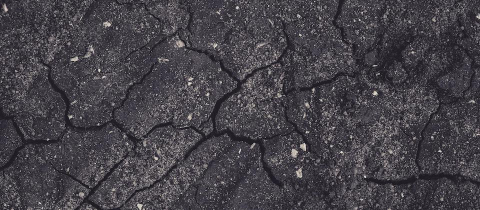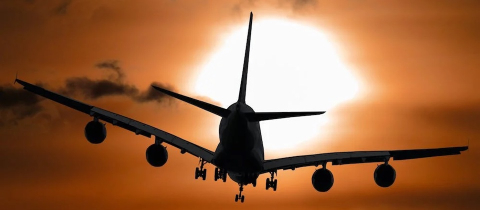Cover Image: Patricia Brubaker and Stephen Poulin fly the flag of Cabbagetown, Toronto, at the summit of Mt. Kilimanjaro.
Now that the pandemic is coming to an end, many of us wish to resume traveling. Some will go to the beach, with packing sufficient sunscreen being one of the few concerns. However, others will have destinations that are profoundly higher than sea level, such as Cusco (Peru; 3,400 m), Lhasa (Tibet; 3,650 m), Vale/Pikes Peak (USA; 3,530/4,300 m), Mt. Blanc (France/Italy; 4,800m) or even Everest Base Camp (China/Nepal; 5,150/5,360 m) or Mt. Kilimanjaro (Tanzania; 5,900 m). Before undertaking such an adventurous trip, understanding the effects that altitude has on the body can be essential to prevent life-threatening illnesses.
By definition, ‘high altitude’ is between 3,000 and 5,000 m above sea level, while ‘extreme altitude’ is higher than 5,000 m; the so-called ‘death-zone’ is at >8,000 m, although there are only 14 mountains in the world that reach such extreme heights. Any elevation below 3,000 m is not considered to be at altitude, although it is important to recognize that some people can be affected even if below 3,000 m.
Why does altitude matter? The most important reason relates to oxygen (O2), a molecule that is essential for human life. At sea level, which has the greatest air density, our oxygen saturation, or how much of the hemoglobin in our red blood cells is bound to oxygen, is ~96%. The red blood cells, of course, circulate in our blood stream in order to deliver O2 to our cells where it plays many essential roles, including efficient generation of ATP for energy (i.e., aerobic respiration). However, as elevation rises, air pressure decreases, resulting in less oxygen availability and, thus, a progressive decrease in our oxygen saturation, to ~89% at high altitude and falling progressively to as low as ~40% at the summit of Mt. Everest. The acute responses to an increase in altitude include an increase in heart rate in order to deliver more red blood cells and, hence, oxygen to the body and an associated increase in respiratory rate.
Our lungs serve several purposes, of which delivery of O2 to the red blood cells and exhalation of carbon dioxide (CO2; derived from metabolic processes) are two key functions. In physiology, the response of the lungs to increases in the blood levels of CO2 is an increase in respiratory rate which, consequently, not only reduces carbon dioxide level but also increases oxygen inspiration. Importantly, blood levels of CO2 help to regulate the acid-base equilibrium of the blood, as illustrated by the chemical equation showing the balance between the basic molecule, bicarbonate (HCO3-) and the acidic molecule CO2:

When more CO2 is exhaled from the body, as occurs in hyperventilation, this tips the ‘acid:base balance’ resulting in an increase in the pH of the blood above the normal level of 7.35-7.45 (i.e., alkalosis), which can be life-threatening. This can be reversed by renal excretion of the bicarbonate, as occurs in hyperventilation due to anxiety or acute illness, for example. However, in individuals traveling to altitude or in those who suffer from altitude sickness (see below), use of the diuretic acetazolamide, which increases renal bicarbonate excretion can be helpful to prevent severe respiratory alkalosis.
Depending on the altitude, up to 50% of travelers experience the symptoms of Acute Mountain Sickness (AMS), which include a headache, often severe, along with sleep disturbances, loss of appetite and/or fatigue. However, ~4% of travelers at altitude progress to life-threatening High Altitude Pulmonary and/or Cerebral Edema in which the lungs (HAPE) and/or brain (HACE) become dangerously filled with fluid. One prevention strategy for these conditions is acclimatization which, acutely, allows time for renal bicarbonate excretion, and, chronically, permits the time for more red blood cells to be made. Acclimatization can be achieved through slower ascent rates, going higher during the day but sleeping at lower elevations, and allowing for rest days between ascents. For more severe cases of AMS, HAPE or HACE, travelers should immediately relocate to as low an altitude as possible. And, if this is not feasible, they can be given oxygen or even be placed in a ‘Gamow’ chamber, which is basically a sealed plastic bag into which air is pumped in order to simulate a lower altitude with higher air pressure. Medical treatments such as the steroid dexamethasone can also be administered, but are normally only used in emergencies.
Finally, there are many other implications of travel to altitude, depending on the elevation, duration and location. For example, the average temperature drops by 2oC for every 300 m above sea level not including wind chill, which increases the risk of frostbite. Weight loss can also occur due to the anorexia that occurs at altitude. Jet lag is also common in those who travel great distances, with associated disruptions in sleep patterns. Finally, travel to distant countries can also involve novel foods or reduced hygiene, resulting in traveller’s enteritis with vomiting and/or diarrhea. Strategies to prevent all of these conditions must be considered.
Altitude has been reported as “being vile at best and fatal at worst, it should be avoided” (D. Rennie in: Lancet 1976;2:1177–9). Advance preparation can help travelers assess and prepare for the risks of altitude. However, despite all of the potential negatives, the joys of achieving a goal, seeing the sun rise over a mountain, discovering the curvature of the earth from a high peak, or even simply learning about how your own body responds to challenges make altitude a destination of choice for many travelers.
Patricia Brubaker, Ph.D., F.R.S.C., is a Professor Emerita, Departments of Physiology and Medicine and a Banting & Best Distinguished Scholar at the University of Toronto, Toronto, ON Canada. Dr. Brubaker completed both her undergrad and PhD at McGill University.







